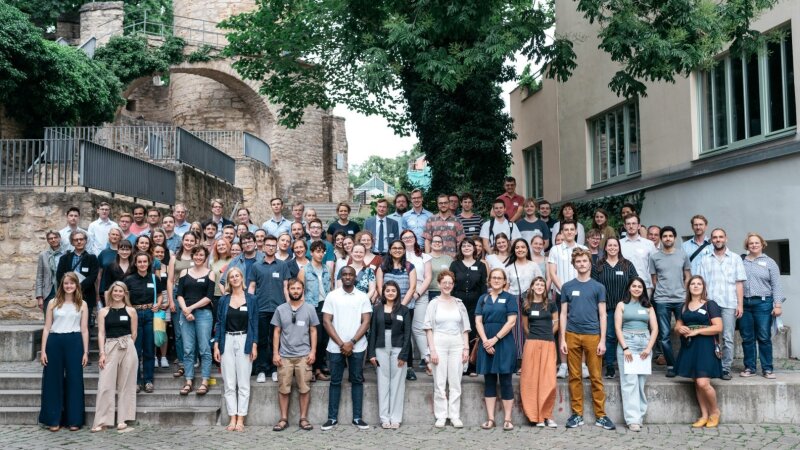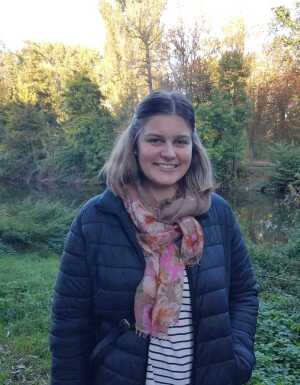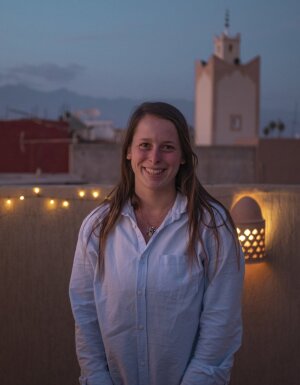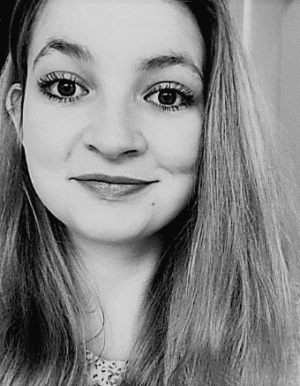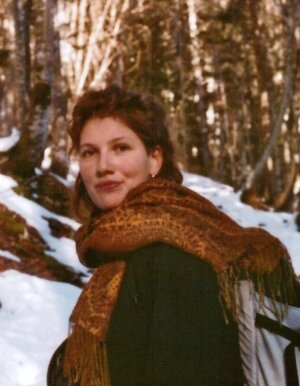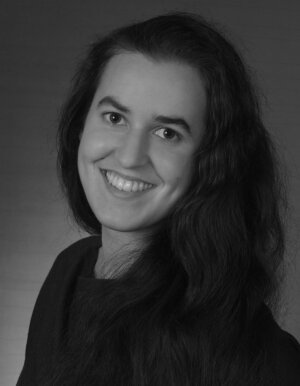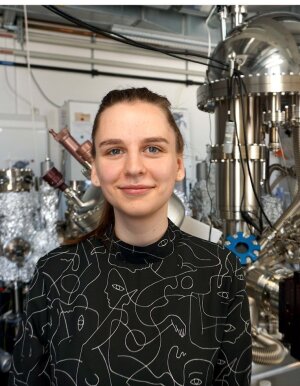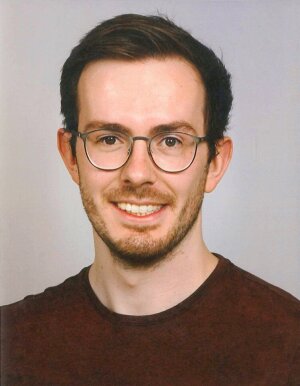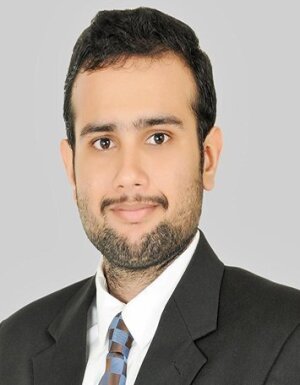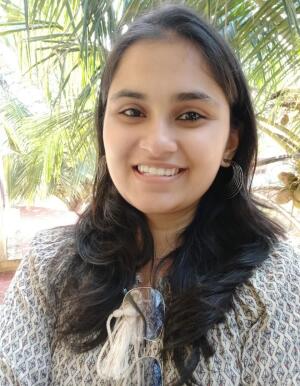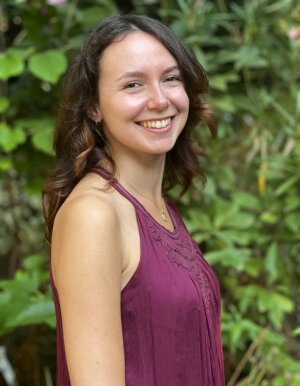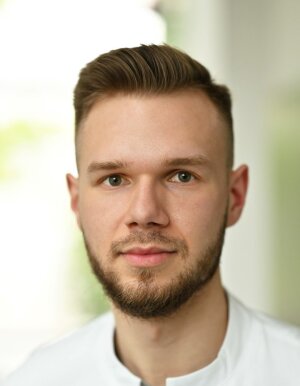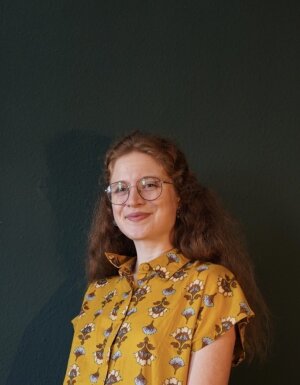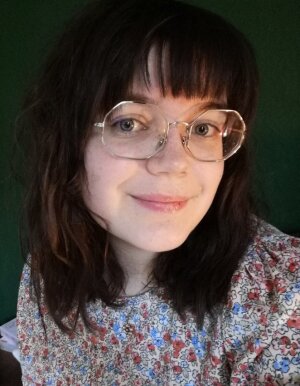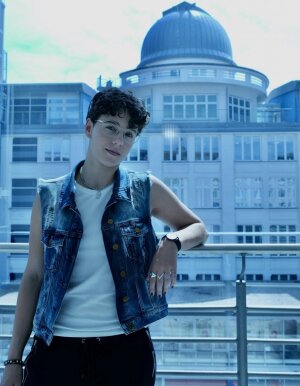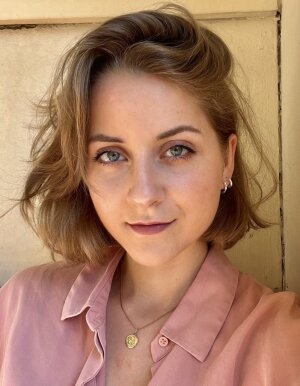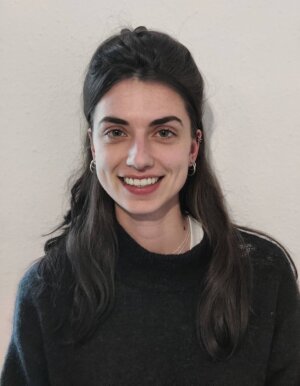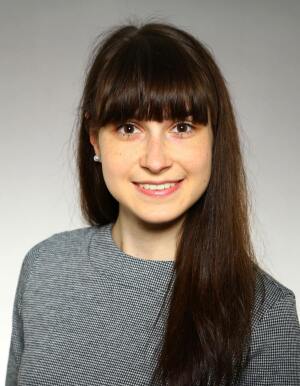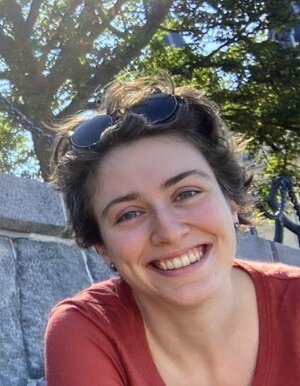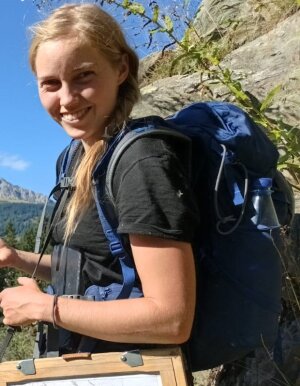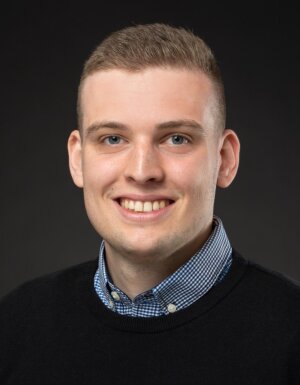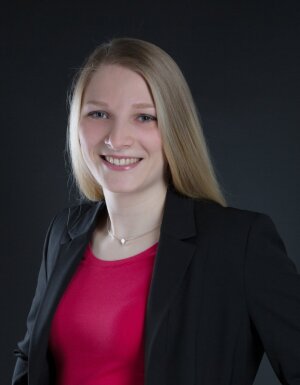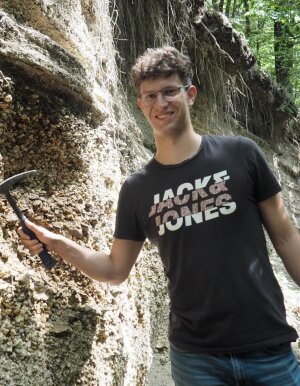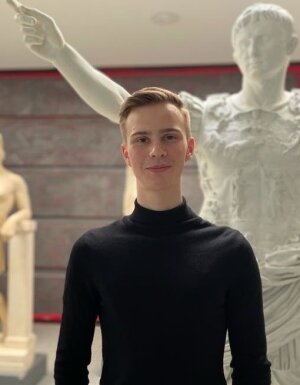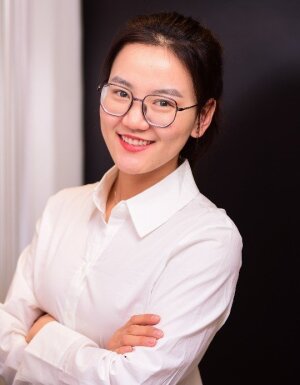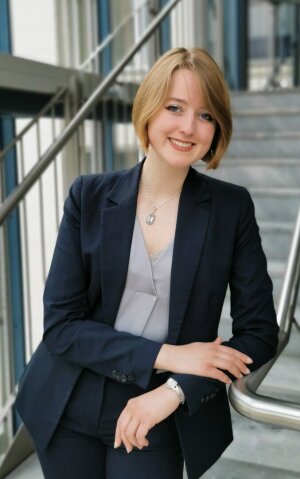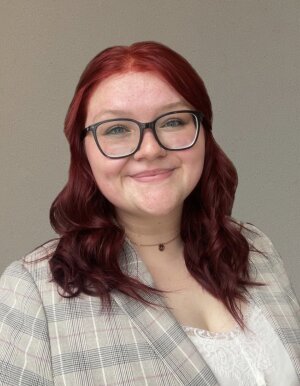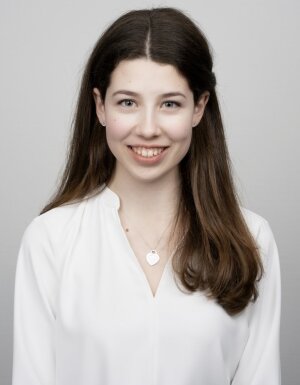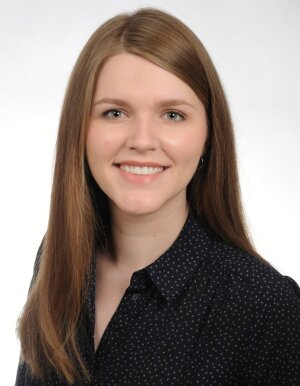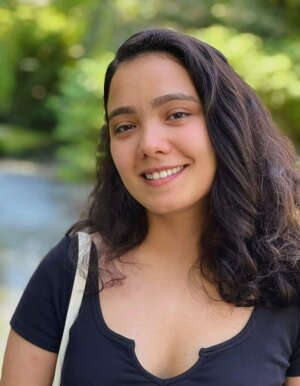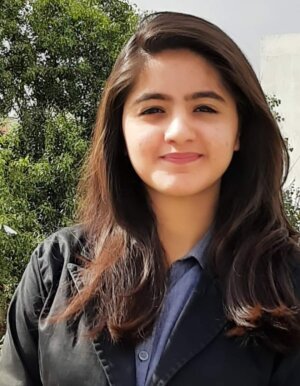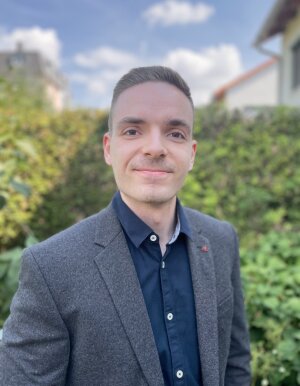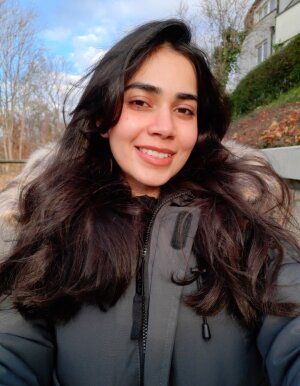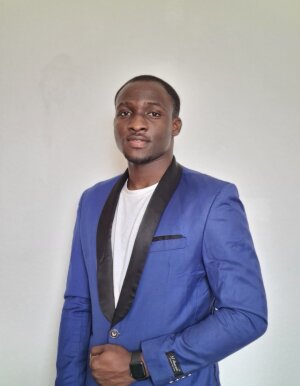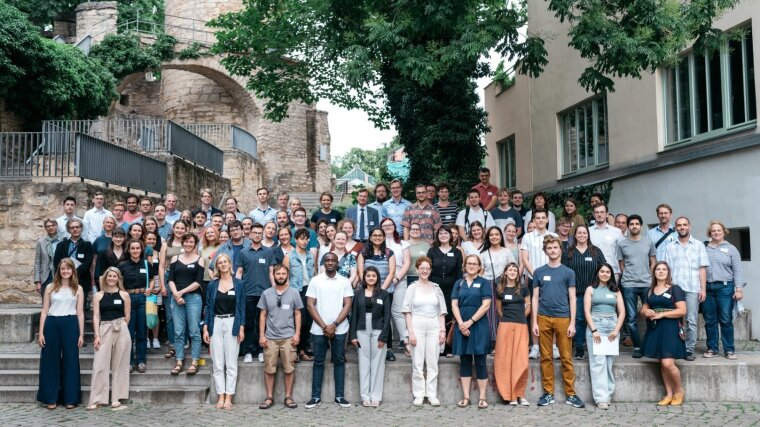
Published:
-
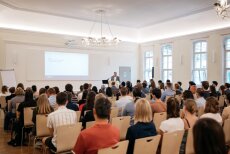 Image: Christoph Worsch (University of Jena)
Image: Christoph Worsch (University of Jena) -
 Image: Christoph Worsch (University of Jena)
Image: Christoph Worsch (University of Jena) -
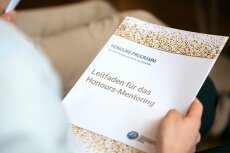 Image: Christoph Worsch (University of Jena)
Image: Christoph Worsch (University of Jena) -
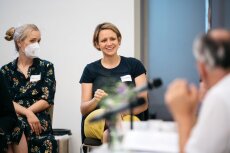 Image: Christoph Worsch (University of Jena)
Image: Christoph Worsch (University of Jena) -
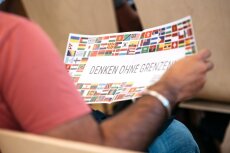 Image: Christoph Worsch (University of Jena)
Image: Christoph Worsch (University of Jena) -
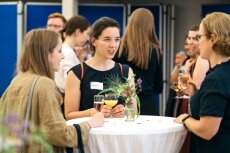 Image: Christoph Worsch (University of Jena)
Image: Christoph Worsch (University of Jena) -
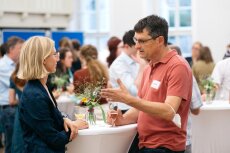 Image: Christoph Worsch (University of Jena)
Image: Christoph Worsch (University of Jena) -
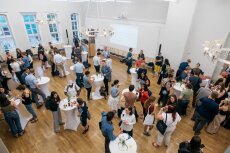 Image: Christoph Worsch (University of Jena)
Image: Christoph Worsch (University of Jena)
-
Alan Avdagic
Course of Studies: Indo-European Studies (B.A.)
Supervision: Prof. Dr. Martin Kümmel
Asterix apud Thuringios
on the tracks of a Celtic past in Thuringia
The region between the Werra and Saale rivers, in the heart of the province of Germania Magna, was located in the Celtic-Germanic contact region in the second half of the last millennium BCE. Even the ancient Greeks and Romans were very interested in what was hidden in the forests of Germania Magna. My research project will contribute to shedding a little more light into the darkness. It is about examining the place and water names of Thuringia for Celtic name elements. Thuringia is of particular interest because it was a transitional area between Celts and Germanic tribes. The aim of the project is to bring together archaeological finds and place names and, at best, even to be able to create a map showing the Celtic spread in Thuringia.Contact:
alan.avdagic@uni-jena.de -
Lukas Bartl
Course of Studies: History and Politics of the 20th Century (M.A.)
Supervision: Prof. Dr. Gisela Mettele
Fit for Unification?
Sport is good for your health. What sounds more than obvious to modern ears has – in historical terms – only very recently been elevated to the status of “common sense“. The social imperative to keep fit gained ground in the 1970s and was further established by the 1980s when Jane Fonda conquered living rooms across the world. Fonda’s Aerobic video tapes and the earlier Trimm-Dich campaign, which are very present in today’s public memory, were western phenomena. My project aims at taking a look at how the growing participation in fitness developed in the former GDR, where risk factors and jogging were not unknown – quite the contrary.
I plan to pursue this aim by analysing a popular health magazine called "Deine Gesundheit“ in the period from 1980 to 1993. -
Anna Katharina Brauckmann
Anna Katharina Brauckmann
Image: privatCourse of Studies: History and Politics of the 20th Century (M.A.)
Supervision: Prof. Dr. Jörg Ganzenmüller
"Reconciliation or open wounds? An analysis of the Conception, Implementation and Meaning of the Salamanca Documentation Center (Centro Documental
de la memoria histórica)" (working title)
My planned research project is a work on the topic of memory and dealing with the past in Spain. There are some gaps in dealing with the Civil War (1936-1939), the dictatorship (1939-1975) and the subsequent transition period. This also includes the lack of an overall social, identity-forming memorial. However, there is a documentation centre in Salamanca with a permanent exhibition on the Civil War. Within the framework of the research project, I would like to analyse the exhibition concept and take a look at the significance of this place for the entire Spanish society.
For this purpose, the analysis is done in a three-step approach using three different types of sources. In the first step, government documents and legal texts will be used to shed light on the state's intentions for the design of this place; in the next step, an examination of the realized exhibition will take place; and finally, the reception and fulfillment of the state's claims will be assessed by drawing on (supra)regional reporting. In this way, the question will be clarified to what extent this documentation centre attempts to establish a nationally valid "master narrative." -
Philipp Brügge
Course of Studies: Prehistory and Early History Archaeology (B.A.)
Supervision: Prof. Dr. Peter Ettel
The iron age Graveyard of Mühlen-Eichsen
-
Tila de Almeida Mendonça
Course of Studies: History and Politics of the 20th Century (M.A.)
Supervision: PD Dr. Jochen Böhler
Teaching and Research go Underground.
Illegal Education in the Warsaw Ghetto, 1939-1942.
From the very beginning, the German invasion of Poland was characterized by the persecution of the educated class there. The part of Warsaw’s population that was defined as Jewish experienced the most extensive restrictions in terms of education. Nevertheless, the illegal education opportunities within the ghetto ranged from kindergarten to vocational schools and a university. Scientific research was also conducted clandestinely with smuggled instruments and contact with the Polish Underground outside of the ghetto. Using the Medical Faculty of the Warsaw Ghetto as an example, the function of education for the different actors (students, lecturers, researchers) will be examined. This faculty was chosen to be studied because of the structure of its program, which lies between legality and illegality, the large number of students and lecturers, as well as the combination of teaching and research. Furthermore, this study shows how the increasing radicalization of the German occupiers affected the education in the ghetto. Diaries, memoirs, transcribed interviews, reports from survivors, and research findings are the mainly used sources chosen for the analysis. This research contributes to the debate about the “resistance” and “everyday experience” of people defined as Jews. -
Caroline De Becker
Caroline De Becker
Image: privatCourse of Studies: English Studies (M.A.)
Supervision: Dr. Adam James Ross Tallman
Motion and perception of time and space in the South American language Aymara
Aymara, an indigenous South American language mainly spoken in the Altiplano area in Bolivia, Peru, and parts of Chile, conceptualizes time differently. Languages such as German or English perceive time in such a way that the future lies in front (e.g. the week is ahead of us) and the past behind us (e.g. the week is behind us). However, it is the opposite in Aymara. The future (pacha qhipa, literally: ‘back time’) lies behind, while the past (pacha nayra, literally: ‘eye time’) lies in front of the speaker. An explanation for this could be that the past has already been experienced and is therefore “visible” to the speaker, whereas the future is unknown and cannot be “seen”. This seems to be a unique feature of the language. The goal is to find out how motion and, connected to that, perception of time and space are expressed in Aymara.Contact:
caroline.de.becker@uni-jena.de -
Maximilian Grübsch
Course of Studies: Caucasus Studies (M.A.)
Supervision: Prof. Dr. Diana Forker
Georgian Loanwords in Chechen: Gender-Assignment
German is known for having three grammatical gender categories: masculine, feminine and neuter. Usually, native speakers can easily find the correct gender for a given word but choosing the gender of loanwords can be challenging. Chechen is a language that even has five or six genders, depending on the counting. It is a minority language within Russia, but its diaspora lives in several countries of the world, also in Georgia. The goal of this project is to take a close look at the strategies Chechen speakers in Georgia use to ascribe a gender to loanwords from Georgian, which has no grammatical gender at all. To this end, data will be collected during field work in Georgia. This will help to enhance our understanding of how gender systems develop in contact. -
Anika Sophie Hühn
Anika Sophie Hühn
Image: privatCourse of Studies: History and Politics of the 20th Century (M.A.)
Supervision: Prof. Dr. Bernhard Strauß
On the Accounting of Psychotherapy Procedures in the GDR. Qualitative evaluation of an interview study
At the same time, the health care system of the GDR was a great achievement of the socialist system, which made almost universal medical care possible, as well as a niche that was always eyeballed with concern by the state leadership and was accused of critical thinking and resistance against the system. This was especially the case for psychotherapy, which developed in the GDR both in accordance with and in rejection of Western models.
The research association SiSaP - Seelenarbeit im Sozialismus (Soul Work in Socialism) investigates this development in the subproject Jena by means of an interview study. My research project is dedicated to the evaluation of the therapy methods developed in the GDR, by using a qualitative analysis of interviews with former psychotherapists. Special attention is given to the investigation of the connection between politics, science, and practical work. The work asks about preconditions, possible unobserved spaces, and obstacles and also takes a closer look at the development of psychotherapy within a reflection of the political situation.Contact:
anika.sophie.huehn@uni-jena.de -
Jonas Krause
Jonas Krause
Image: privatCourse of Studies: German (Teacher Training, State Examination)
Supervision: Dr. Jens Ole Schneider
The New Middle Class in Contemporary German Literature
Contemporary German pop literature is increasingly picking up on debates around identity. Apart from race or gender, one can see how contemporary literature addresses social class, bringing German bourgeois or middle-class culture into play.
This project will analyse the ways German bourgeois culture is addressed in contemporary German literature. In regard to this, such a term must include new tendencies from the discourse around German middle-class culture in order to incorporate individualistic middle-class lifestyle milieus – groups that exhibit subversive lifestyles and attitudes much different from the ‘bourgeois’, for example veganism or ecologism, but which can still be considered ‘bourgeois’ due to their role as a culturally formative centre. Which literary forms and devices are used to portray this? Is there criticism and in what way does it manifest itself?
Analysing selected instances of contemporary German literature, these and more questions shall be answered.Contact:
jonas.krause@uni-jena.de -
Aurelia Sophie Rohrmann
Aurelia Sophie Rohrmann
Image: privatCourse of Studies: History and Politics of the 20th Century (M.A.)
Supervision: Prof. Dr. Stefanie Middendorf
Transformation Processes of Right-Wing Violence and Masculinity. A historisation of right-wing actors, networks and ideologies 1967-1977
With my research project, I aim to contribute to the historization of right-wing violence after 1945. The phenomenon of masculinity plays a constitutive role in this: right-wing extremist comradeships and military sports groups are considered to be male alliances par excellence. Public perception and media coverage also often reinforce the stereotype of the male rowdy and skinhead.
Therefore, I would like to consider the question of whether a stereotyped image of right-wing masculinity does justice to the historical realities of 1967-1977 or whether different, changing conceptions of masculinity were significant in relation to right-wing violence. What role played anti-feminism’s reactionary response to the emancipation processes of 1968 and the second women's movement? Such an analysis offers the potential to better understand gender concepts in the extreme right in their genesis and thus to examine right-wing violence for possible causes. -
Daniel Tahmazyan
Course of Studies: Modern History (M.A.)
Supervision: Prof. Thomas Kroll
Droysen's Nation-State as Civitas Dei? The Theological Underpinnings of the Nationalist Historiography
My project for the Honours-Programme deals with the religious beliefs and the political convictions of the German historian Johann Gustav Droysen. Being a religious person, one who believed in the guiding presence of God in worldly affairs, Droysen was also of the opinion that the nation-state should be the immediate goal of the German people, and that it was the permanent solution to the problems that were unleashed by the French Revolution and the ensuing Napoleonic wars. In an attempt to bridge the gap between his theoretical and his practical views, my study will be concerned with the religious undertones of the nationalist historiography of the 19th century. Hence, the theological concept civitas dei (City of God/ Gottesstaat) will be applied to arrive at a possible explanation of the connection between Droysen’s religious beliefs and the historical mission, i.e., the creation of the nation-state, which he felt he stood for and represented.Contact:
daniel.tahmazyan@uni-jena.de -
Karin Weihrater
Karin Weihrater
Image: Martin GebhardtCourse of Studies: Romance Studies, Slavic Studies (B.A.)
Supervision: Prof. Dr. Thomas Scharinger
An Unknown Grammar by Giovanni Battista de Pagani (1761) for German-speaking Learners of Italian
The subject of my research project is Giovanni Battista de Pagani’s grammar Les vrais Fondemens & Principes de la Langue Itallienne […], written in Frankfurt am Main in 1761 – an Italian grammar addressed to German-speaking learners, though using French as its metalanguage, and of which only one handwritten exemplar has been preserved. Since the grammar has not yet been described scientifically, I will intensively examine the manuscript stored in the GSA in Weimar. After a first indexing of the work’s content, I will compare this with other Italian grammars circulating in the German-speaking area in the 18th century. Thereby, the main question will be whether and, if so, to what extent Pagani’s grammar differs from other Italian grammars of the time. Are there differences in the structure or in the weighting of the contents? Is Pagani’s grammar more innovative? Or did he copy parts from other grammars?Contact:
karin.weihrater@uni-jena.de
-
Florentine Friedrich
Florentine Friedrich
Image: privatCourse of Studies: Physics (B.Sc.)
Supervision: Prof. Dr. Torsten Fritz
Characterization of optical and structural properties of the molecule 1,4,7,10-Tetra(tert-butyl)perylene on the 2D material blue phosphorene on a gold surface
Organic materials are promising candidates for the development of new electronic components. Widely known applications, that were already brought to series production, are organic light emitting diodes (OLEDs). They are commonly used in televisions and make it possible to design the devices in a very thin way. In my Honours project, I investigate the properties of a system, that consists of three different materials: the organic molecule TBPe is deposited onto a layer of blue phosphorene, that lies on top of a gold surface. Blue phosphorene is a very thin material (approximately one million times thinner than human hair), which is why it is called a 2D material. Another 2D material, that has been known for a longer period of time, is graphene. Andre Geim and Konstantin Novoselov received the Nobel Prize for Physics in 2010 for its investigation. In the mentioned system, blue phosphorene is supposed to prevent the unintentional interaction between the TBPe molecules and the gold surface.Contact:
florentine.friedrich@uni-jena.de -
Lukas Haßfurth
Course of Studies: Physics (M.Sc.)
Supervision: Prof. Dr. Rainer Heintzmann
A deep-learning-based approach to spatially varying deconvolution
Optical instruments can’t resolve arbitrarily small structures in investigated samples. The point spread function (PSF) characterizes the limits of the instrument’s resolving power. In the simplest case, the image formation process can be described mathematically by a convolution. Conversely, an algorithm that attempts to estimate the structure of the sample from the measured image again is called a deconvolution. In the more realistic case of PSF that varies by position in the field of view, the convolution must be approximated in some way and the deconvolution algorithms need to be more sophisticated, either making them slower or using more approximations. A novel deconvolution approach based on deep-learning promises both high accuracy and high speeds. We are trying to improve this new approach, apply it to a variety of microscopes, and release our toolbox as open-source software. -
Felix Hildebrandt
Felix Hildebrandt
Image: privatCourse of Studies: Physics (M.Sc.)
Supervision: Prof. Dr. Christian Eggeling
Super-resolution microscopy of Natural Killer cell receptors in the nm scale
Natural Killer cells (NK cells) are an essential part of the innate immune system. They check other cells for viral infection or malignant transformation and, if necessary, initiate controlled cell death in the target cell. It is already known that the interaction of various receptors on the NK cell and target cell is responsible for these decision processes. So far, however, little attention has been paid to the actual spatial arrangements of the granules to the receptors and their influence on the decision-making process. The reason for this are the spatial dimensions that can only be resolved with super-resolution microscopy. Therefore, the basic idea of the project is to investigate the structural arrangement of these NK cell receptors, and the influence of immune response inhibitors, using the most modern super resolution microscopes STED, STORM and MINFLUX.Contact:
felix.hildebrandt@uni-jena.de -
Yash Pathak
Yash Pathak
Image: privatStudiengang: Photonics (M.Sc.)
Supervision: Dr. Reinhard Geiß
All-optical quantum experiment kit with a modular design and remote control capabilities to demonstrate and implement unitary operations in coincidence basis with potential generalization to address various fundamental quantum effects and their application to quantum information processing
Quantum optics is demonstrably a promising technology for implementing quantum information processing (QIP) algorithms, because of the inherent robustness of the polarization entanglement against decoherence. Quantum optical systems have been largely restricted to laboratories, which has been a major impediment preventing practical offline/online courses based on this technology. But, with the growing interest in this technology, it is important to develop modular extensions that are resilient to environmental factors and can be operated remotely from anywhere with minimal utilities. Reliable entangled photon sources based on SPDC in non-linear crystals already exist from some suppliers. However, modular extensions using linear optical elements that can be used for rapid testing of hypotheses and generic ideas about quantum mechanics in general as well as QIP with optics have not been developed to the best of our knowledge. Such a system would be used not only for pedagogical purposes but would be adapted for research applications as well. In this project, we develop modular extensions, implementing single and two qubit universal quantum gates using higher order interferometry, and we establish a proof of concept. -
Preethi Ramesh Narayan
Preethi Ramesh Narayan
Image: privatCourse of Studies: Physics (M.Sc.)
Supervision: Dr. Christin David
Nonlocal Soft Plasmonics in planar homogeneous multilayer systems
Plasmonics is the study of resonant interactions between the electrons in the conduction band of metals and electromagnetic radiation. These charge oscillations can also be found in soft matter such as the charged ionic fluid in an impermeable lipid membrane. This creates a bridge between the physics of hard matter and soft matter. We study the charge oscillations of heavy ions in solid planar electrolyte systems. Novel theoretical models are developed to investigate the interaction effects of charge carriers in the communication of nerve cells and energy transfer between electrolytes and solid interfaces. We also take into consideration nonclassical interactions between the charge carriers that happen due to strong spatial confinement on the nanoscale. These quantum interactions are studied in the scope of semi-classical calculations with a particular focus on nonlocality in ion-ion interactions that go beyond classical electrodynamics.
-
Hannah Alexa Geller
Hannah Alexa Geller
Image: privatCourse of Studies: Medicine (State Examination)
Supervision: Prof. Dr. Dr. Christoph Redies
Statistical Image Properties and the Aesthetic Perception of Abstract Art
In my research, I compare abstract art, generated either by human artists or by a computer, with traditional artworks from the Western art canon. With a Neural Style Transfer (NST) algorithm, we transferred the style of various abstract original paintings onto computer-generated, abstract random-phase patterns. At first, I analyzed the objective statistical image properties (SIPs, e.g., colour information, edge orientations, or self-similarity) of the different image categories. I then performed a rating experiment, in which 40 participants rated the images along different rating dimensions (Pleasing, Harmonious, and Interesting). One of our main results is that computer-generated art images are rated more highly if their image properties are statistically more similar to those of traditional art. Furthermore, we can explain 50-69% of the variance of the subjective ratings using the specific SIPs in our study, which also lead us to new insights into the mechanics of the NST-algorithm.Contact:
hannahalexa.geller@uni-jena.de -
Michael Reimann
Michael Reimann
Image: privatCourse of Studies: Dentistry (State Examination)
Supervision: PD Dr. Ulrike Schulze-Späte
The role of therapeutic immunomodulation in periodontitis-associated bone loss.
The increase of diet-related diseases such as obesity, diabetes mellitus, hypertension, myocardial infarction, stroke, etc. is a global challenge due to recent demographic developments. Current research aims to develop preventive strategies and, thereby, recent findings defined the relationship of different dietary fats with the development and progression of these diseases. Further, periodontitis, a bacterial-induced inflammatory disease of the periodontium is associated with diet-related diseases and it has a high age prevalence. Recent studies aim to address dietary immune modulation to combat the inflammation-driven progression of periodontitis and thereby lower overall systemic inflammation in associated diseases. The focus of this investigation will be to determine cellular regulation of the immune-modulated host response with the aim of developing preclinical therapeutic approaches.Contact:
micheal.reimann@med.uni-jena.de -
Anna Katharina Renner
Anna Katharina Renner
Image: privatCourse of Studies: Molecular Medicine (M.Sc.)
Supervision: Dr. Susanne Jahreis
Analysis of Activation and Migration of MAIT Cells in Response to Human Pulmonary Aspergillus fumigatus Infection in the Invasive Aspergillosis-on-Chip Model
Spores of the ubiquitous fungus Aspergillus fumigatus are continuously inhaled in our daily life yet are effectively cleared by a competent immune system in healthy individuals. However, these spores can impose a direct threat to immunocompromised patients, leading to a disease with high mortality rates termed invasive aspergillosis.
Since treatment options are limited, understanding the pathobiology of fungal infections is crucial. The first line of defense is driven by the innate immune system ensued by a robust T cell response of the adaptive immunity. Recently, the activation of an innate-like T cell subset, termed mucosal-associated invariant T (MAIT) cells by fungal pathogens was discovered in in vitro cell culture. Yet, their role in antifungal immunity is not entirely known and is thus studied in this project via using a novel, in vivo-like “lung-on-chip” model mirroring the microanatomical features of a human alveolus and allowing to mimic invasive aspergillosis. -
Harini Keerthana Suresh Kumar
Harini Keerthana Suresh Kumar
Image: privatCourse of Studies: Molecular Medicine (M.Sc.)
Supervision: Prof. Dr. Ignacio Rubio
Phenomenon of organ failure in severe infections and sepsis
Severe sepsis is accompanied by massive organ damage. Inflammatory stress can lead directly or indirectly to severe damage to tissues and organs. Sepsis, thus, triggers widespread cell death as a consequence of inflammation. In many cases, the liver is affected.
Preliminary results suggest that inflammatory damage can be effectively addressed by preconditioning hepatocytes through caloric restriction, but it is important to understand how the pro-inflammatory process triggers cell damage and death. The mechanism of cell death will be studied in immortalized hepatocytes. One focus will be to narrow down the intracellular signaling pathway(s) that occurs during cell death. A deep insight into how the inflammatory components signal the cell to die, and into the manner in which the cell dies, opens a way to find a therapeutic strategy and prevent organ failure.Contact:
harini.sureshkumar@uni-jena.de
-
Amina Aissaoui
Course of Study: Psychology in Work, Eduaction and Society (M.Sc.)
Supervision: Dr. Birk Hagemeyer
The Dynamic Interplay between Loneliness and Hostility
Loneliness and hostility have theoretically been associated since the 1930s. Nevertheless, there is still little research on the connection between the two phenomena. When an individual gets lonelier than he or she usually is, does he or she also get more hostile? And vice versa? I posed these and other questions in my previous HONOURS project. And the answer was: yes, there is an intraindividual association between loneliness and hostility over time in three large-scale datasets (N ≈ 50.000). Is there a short-term connection between the two phenomena though? When I’m lonelier than usually today, am I more hostile than usually tomorrow? And vice versa? I’d like to explore such and other effects in the current project with the help of an experience sampling method.Contact:
amina.aissaoui@uni-jena.de -
Yona Bretschneider
Course of Studies: Social Theory (M.A.)
Supervision: Prof. Carola Dietze
Historical Theory of Alltagsgeschichte - A New Paradigm reflected in its Criticism
-
Till Buchinger
Course of Studies: Education - Culture - Anthropology (M.A.)
Supervision: Prof. Dr. Dr. Ralf Koerrenz
"Do we need to understand our technology?" Artificial intelligence as the frontier of autonomy
Autonomy has traditionally been a pedagogically relevant topic. Successful educational practice should support learners in organizing their own learning more independently. The reformist educator Maria Montessori aptly described this objective with the saying "Help me to do it myself". This request presents educators with a difficult task: they are to support learners in not needing assistance. With regard to the topic of autonomy, this means that educators intervene in the autonomy of learners in order to strengthen their autonomy in the long term. In times of digitalization and artificial intelligence, this task takes on a new dimension. Digital technologies are an integral part of society, and so two questions arise: How much do people need to know about how these technologies work in order to move autonomously in the infosphere, and how can they be helped to achieve this autonomy? -
Charlotte Friederike Dietel
Charlotte Friederike Dietel
Image: privatCourse of Studies: Educational Science (B.A.)
Supervision: Prof. Dr. Nele Kuhlmann
Expectations of Transformation in Advice Literature
Experiences with discrimination accompany our everyday life in different kinds of ways. Contrary to these experiences of discrimination stand programs, e.g., advice literature, which are supposed to encourage reflecting on such situations and to support the readers by way of their knowledge and instructions. Advice literature relates to the readers’ thinking and behaviour as well as changing these in any kind of way. Among other things, advice literature asks their readership to reflect on themselves, other people, and the social order. The question is: what defines these expectations of transformation?
I would like to explore this question within this research project. Through a qualitative discourse analysis, advice literature which deals with topics such as racism and sexism will be compared and analysed. The goal is, to find out, how the readership is advised to behave towards their own race and gender, as well as to people from differing races and genders, and which understanding of sensitization is implied. Furthermore, the research also focuses on how readers are addressed and how their attitudes and biases are included within the advice literature. -
Maria Ehnert
Maria Ehnert
Image: privatCourse of Studies: Social Studies, English (Teacher Training, State Examination)
Supervision: Dr. Christoph Giesel
Anti-Arab Racism in the German Refugee Discourse: Media Coverage of Syrian Refugees and the Consequential Public Perception in Comparison with the Ukrainian Refugee Stream
This research project deals with the media coverage of Syria and Syrians, and the associated public perception, as well as with anti-Arab racism in the German public discourse. Within the framework of a discursive and comparative media analysis, it is investigated to what extent a tendency towards xenophobia and hostility towards Arabs can be identified in the German media discourse on migration and whether German reporting evokes negative stereotypes and stigmas. In this context, we will examine the extent to which discursive constructions diverge through the German coverage of Ukrainian and Syrian refugees by selected daily and weekly print and online media. The thematic comparative analysis is pioneering research that examines highly topical events which are still in progress in combination with processes of very high socio-political scope and relevance that have already been ongoing for years: armed conflicts in Ukraine versus Syria as well as other Arab states and the resulting refugee movements to Germany. -
Chantalle El Helou
Chantalle El Helou
Image: privatCourse of Studies: Political Science (B.A.)
Supervision: Prof. Dr. Michael Dreyer
An analysis of the relationship between modern Antisemitism and postmodern theory
Modern anti-Semitism is analytically clearly distinguishable from racism and is characterized by the central motif of the Jew as the third party, who is thought of as the troublemaker and cause of all evil in what is an actually good and diverse world of peoples. Antisemitic motives often appear in an indirect way, not always with a clear reference and conceptual naming of 'the Jew'. Among members of postmodern theoretical currents, Israel-related Antisemitism is particularly prevalent. The question that arises here, is whether this Antisemitism is of a purely biographical nature or already inherent in the theory and thus a consequence of the basic social conception and analysis of society in postmodern theory. Is there, then, an analytical Antisemitism to be found in the basic motifs of postmodern criticism? This question will be pursued by analyzing the argumentation structure of concrete texts, the classics of postmodern criticism. -
Julia Freitag
Course of Studies: Psychology (M.Sc.)
Supervision: Prof. Dr. Franz Josef Neyer
Daily dynamics of loneliness, its associations to daily events and affective processes, and opportunities for intervention in psychology
In psychology, loneliness describes a subjective qualitative and/or quantitative deficit in social relationships. This subjective phenomenon can, but does not need to come along with objective social isolation. Especially lasting loneliness is associated with worse physical and mental health issues. However, it is not much known about which daily events trigger feelings of loneliness, how they do it and how these processes are related to other affective processes. The investigation of this question contributes to an improved understanding of loneliness and the mechanisms working in psychological interventions that aim at reducing loneliness. -
Cornelia Hartl
Cornelia Hartl
Image: privatCourse of Studies: Psychology (B.Sc.)
Supervision: Prof. Dr. Michaela Riediger
The relationship between adverse life events and empathic accuracy with reference to posttraumatic growth.
Does going through a difficult breakup or the death of a loved one make you a mentalist?
Stressful life events rarely pass by without leaving a trace. But can crises characterized by temporary excessive demands and a feeling of powerlessness have positive effects on socio-emotional competencies? Past studies have shown that people with negative life experiences have a greater tendency to perspective-taking. This is a skill that is required for empathic accuracy, which is the ability to correctly read others’ thoughts and feelings.
Within the Honours Programme, I would like to investigate to what extent empathic accuracy differs between people with and without crisis experience and what role crisis-induced growth plays in this. Empathic accuracy will be assessed using the Standard Stimulus Paradigm, in which subjects rate the mental and emotional state of protagonists in various videos.Contact:
cornelia.hartl@uni-jena.de -
Lena Mann
Lena Mann
Image: privatCourse of Studies: Sociology (M.A.)
Supervision: Dr. Robin Saalfeld
Property arrangements in couples' households – a class perspective
The research project deals with the structural change of property in couple households and its potential effects on the intra-couple division of labor and the meaning of property for gender relations. In this context, the couples' property arrangements (doing property), but also the couple construction (doing couple) in interaction with the respective gender constructions (doing gender) are investigated. The project is not only about the distribution of property between the partners, but also about which property objects are relevant within the couple context, which meaning is attributed to them, how they are managed and spent, and who has which rights of disposal over them. My personal contribution to the project is adding a class perspective to the differentiations between the couple households. Using qualitative methods, I will focus on the comparative analysis of the property arrangements of couple households belonging to different classes, especially with regard to the relationship between class and gender.Contact:
lena.mann@uni-jena.de -
Miriam Meuser
Course of Studies: Psychology (M.Sc.)
Supervision: Prof. Dr. Ilona Croy
Construction and validation of a questionnaire to measure motivation for change in psychotherapy
Over the past few decades, psychotherapy research has shown that the effectiveness of psychotherapy is more strongly influenced by general than by specific factors. The aim of this project is to operationalize, test and validate the motivation for change in psychotherapy as a possible general factor in the form of a questionnaire. The motivation for change describes the extent to which patients are willing to initiate changes in order to overcome their suffering. Studies conducted so far show that motivation plays a crucial role in the treatment of mental disorders. According to our current state of knowledge, there is still no recognized, change-sensitive and widely used measuring instrument for recording motivation for change in psychotherapy. In the long term, research in this field may contribute to find out which processes take place in psychotherapy and affect its effectiveness.
Contact:
miriam.meuser@uni-jena.de -
Lara Sophie Schießl
Course of Studies: Psychology in Work, Eduaction and Society (M.Sc.)
Supervision: Dr. Antje Rauers
Talking is gold - Social Sharing of Emotions and the development of closeness in queer relationships
-
Sina Wiese
Course of Studies: Cognitive Psychology and Cognitive Neuroscience (M.Sc.)
Supervision: Prof. Dr. Thomas Weiss (University of Jena, Dr. Roland Benoit (MPI Leipzig), Dr. Philipp Paulus (University of Freiburg)
The structure of experience: examining the emergence of schematic representation in the medial prefrontal Cortex
I can vividly imagine myself going to the library later with my friend Lea. Why is that, actually? We use our memory to imagine the future. Abstracted from individual memories, so-called schemas of certain situations are created in the brain. They enable us to imagine similar events in the future. But how does such schematic knowledge emerge across individual experiences?
In his Adaptive Memory research group at the Max Planck Institute, Roland Benoit investigates how our brain enables us to remember the past and imagine the future. Together with him and Philipp Paulus, a former Ph.D. student of the group, I will examine how schemas emerge in the medial prefrontal cortex (mPFC). With the help of the TV show The Wire! over a period of two weeks, participants will watch the entire first season and thus get to know the characters, which will lead to such schematic representations. I examine the structure of the participants’ memory representation, using fMRI and Representational Similarity Analyses. We hypothesize that both structural knowledge about the characters' relationships and their affective value are stored in the schematic representations in the mPFC.
I am very happy about the great support from the Adaptive Memory Group as well as from Thomas Weiß from the University of Jena for my research project!Contact:
sina.sophia.wiese@uni-jena.de -
Ellen Winkler
Ellen Winkler
Image: privatCourse of Studies: Sociology (M.A.)
Supervision: Prof. Dr. Kathrin Leuze
Atypical career aspirations of girls and boys
Already in primary school, boys and girls show gender-typical preferences when asked about their dream job. This phenomenon continues throughout life and results, among others, in the underrepresentation of women in the male-dominated STEM-field (science, technology, engineering & mathematics). The early promotion of girls’ atypical aspirations is an important topic in research, politics, and society. Various explanatory factors for typical and atypical career aspirations of girls have already been intensively researched. However, much less is known about aspects that prevent or promote boys' interest in female-dominated professions. In my research, I am therefore pursuing a bilateral approach. On the one hand, I am concerned with the relevance of personality for girls' atypical aspirations in STEM fields. On the other hand, I take an explorative look at masculine atypical aspirations. My project aims to highlight that the promotion of atypical aspirations of both genders is necessary to achieve gender equality.Contact:
ellen.winkler@uni-jena.de
-
Marianne Böhm
Marianne Böhm
Image: privatCourse of Studies: Geography (M.Sc.)
Supervision: Dr.-Ing. Clémence Dubois
Characterising forest structure parameters using LiDAR and SAR remote sensing
How a given forest is structured influences its habitat function and its resilience towards environmental change. In my project, I will combine two types of remote-sensing datasets that contain information on forest structure: LiDAR and Radar.
Radar sensors on satellites emit microwaves and measure the return time and intensity of the backscattered signal. Using various frequencies allows us to investigate different components of forest anatomy: from the canopy surface to the stems. Therefore, by combining frequencies, forest structure can be characterized.
To achieve this, however, the response of radars towards forest properties must be described first. In my Honours project, I will address this question by using laser scans as a reference. These LiDAR-point clouds allow a three-dimensional estimate of forest structural parameters that I will compare to the radar data, specifically in forests in Thuringia.Contact:
marianne.boehm@uni-jena.de -
Muriel Bülhoff
Muriel Bülhoff
Image: privatCourse of Studies: Geosciences (M.Sc.)
Supervision: Prof. Dr. Kamil Ustaszewski
Is there clear evidence for the occurrence of pseudotachylites (frictional melts) along the Pustertal-Gailtal-Line of the Periadriatic fault system?
The Periadriatic fault system represents a dextral (right-lateral) strike-slip fault zone, resulting from the northwest-oriented movement of the Adriatic Plate relative to the European Plate and can be traced through the entire Alpine Arc. In the eastern part of this fault zone, significantly fewer historical and instrumental earthquakes have been recorded than in the regions south of the fault zone. In my project, I am therefore investigating an eastern segment of this fault zone, the Pustertal-Gailtal-Line, for the presence of pseudotachylites, that prove the occurrence of earthquakes. Due to frictional heat, the surrounding rocks partially melt during their formation and solidify again to amorphous glasses. For this purpose, I am conducting geological mapping in my study area near Maria Luggau in the Lesachtal (about 15 km south of Lienz). Apart from that, I am analyzing thin sections, prepared from locally collected rock samples, using a polarizing microscope, scanning electron microscope, Raman spectroscopy and micro X-ray fluorescence analysis. Through my project, the tectonic understanding of the Pustertal-Gailtal-Line is enhanced.Contact:
muriel.buelhoff@uni-jena.de -
Simon Franzen
Simon Franzen
Image: privatCourse of Studies: Geoinformatics (M.Sc.)
Supervision: Prof. Dr. Alexander Brenning
Tallinn in the 17th century - a geodata-based historical model
Tallinn (German: Reval, Swedish: Lindanäs) was one of the most important urban centers in the eastern Baltic Sea region during the 17th century. Trade flows from Sweden, the Baltic States, Finland, and the Russian region converged in the city on the shores of the Gulf of Finland. However, life in Tallinn at this time was not only characterized by vivid business activity, but also by the cities’ function as a political and cultural center.
In my project, I visualize and analyze the various spatial-historical dimensions of Tallinn's city history in the 17th century using methods of Geographical Information Science (GIS). Two digital maps are to be created as products of the project: the first one illustrates the city itself and the second one depicts the cities’ commercial ties and political interdependencies in the Baltic Sea region. The project is designed not only as a contribution to historical research on Eastern Europe and urbanity, but also as an illustration of the application of GIS-methods for the humanities and cultural studies.Contact:
simon.franzen@uni-jena.de -
Lucas Gregor
Course of Studies: Chemistry (M.Sc.)
Supervision: Prof. Dr. Ivan Vilotijevic
Development of a total synthesis of mycofactocin and derivatives
-
Leah Maria Hendrikje Haase
Course of Studies: Chemistry (B.Sc.)
Supervision: Prof. Dr. Ute Neugebauer
Spectroscopic characterization of the activation state of monocytes after stimulation of different Toll-like receptors
Monocytes are an important component of the human immune system. They express different receptors to react to external stimuli, and to sense bacteria, viruses or parts of these pathogens (so-called pathogen-associated molecular patterns, PAMPs). These receptors include toll-like receptors. After activation with PAMPs or pathogens, monocytes undergo significant changes. Based on the pathogen-specific activation profiles, information about the invading pathogen can be obtained.
In my project, I will stimulate different toll-like receptors of human monocytes (THP-1 cells) with PAMPs and characterize the activation states of the monocytes using Raman microscopy. By comparing the Raman spectra, I will investigate the differences between the non-activated and activated monocytes as well as between the different activation profiles.Contact:
l.haase@uni-jena.de -
Corrie Mathiak
Course of Studies: Geography: Climate and Environmental Change (M.Sc.)
Supervision: Dr. Alexander Tischer
Investigating near-surface microclimatic conditions in a pure Norway spruce stand in the Hildburghausen municipal forest and the effects of deadwood enrichment
As one even-aged Norway spruce tree stands in Hildburghausen municipal forest near the end of its life cycle, management practices to increase biodiversity, to enhance resilience and facilitate regeneration are investigated. Preliminary explorative research is performed on the microclimatic characteristics of wind, water content and temperature in the stand. Unlike in most forest microclimate studies, the focus will be specifically on near-surface measurements, i.e., the sphere which is important for seedling and sapling development in forest regeneration. Then, an experimental element is added to test the effects of small-scale deadwood accumulations on these microclimatic characteristics. The aim is to determine whether similar deadwood accumulations might serve as a forest management practice to improve the microclimatic conditions at the forest floor and to facilitate the establishment of more climate resilient tree species introduced by direct seeding. -
Verena Müller
Verena Müller
Image: privatCourse of Studies: Chemistry (M.Sc.)
Supervision: Prof. Dr. Andrey Turchanin
Self-assembly of Ru(II)-polypyridine-complexes on surfaces for applications in modern photocatalysis
The generation of renewable energies has become the focus of science in recent years. In my research project, I am working on the synthesis of “artificial leaves” to imitate nature’s photosynthesis. The so called “artificial leave” is a 2D material of the ruthenium(II) polypyridine complex, which is photoactive. The synthesis of these “leaves” takes place in several steps on gold surfaces and has been reproduced several times in TRR 234 “CataLight”. First, a unimolecular thick, self-assembled monolayer (SAM) is generated due to the coordinative interaction between gold and carboxyl groups. Cross-linking via low-energy irradiation results in a carbon nanomembrane (CNM). Various surface-sensitive techniques are used for characterization (e.g., AFM, REM, XPS). In the course of my research project, the binding mechanism between gold and carboxyl groups will be elucidated in more detail using a special method of “polarization modulation infrared reflection absorption spectroscopy” (PM-IRRAS). Furthermore, the synthesis of SAMs on silver layers will be optimized, as this substrate is more reactive than gold.Contact:
verena.mueller@uni-jena.de -
Maximilian Prochnow
Maximilian Prochnow
Image: privatCourse of Studies: Geography, German (Teacher Training, State Examination)
Supervision: Prof. Roland Zech
Holocene moisture history based on biomarker and stable isotope analyses from Moossee (Switzerland)
Application of direct paleohydrological proxies in the European Alps has been very rare. Most studies cover the entire Holocene (~11.7 ka) only discontinuously and at a low temporal resolution. Further research, using quantitative proxies directly related to hydrology, is strongly needed to disentangle the mechanisms of the changing climate and their impact on the ecosystem of the European Alps during the Holocene. Within my research project, I will focus on lake sediments from Moossee (Switzerland). I will investigate the compound-specific stable hydrogen composition of sedimentary n-alkane biomarkers (δ2Hn-alkanes) by comparing the δ2H signal of terrestrial and aquatic n-alkane compounds. Therefore, the isotopic offset between the terrestrial and aquatic δ2H signal delivers information about past changes in moisture availability and evaporation, because the aquatic δ2H signal is thought to be controlled by the lake water’s evaporative enrichment.Contact:
maximilian.prochnow@uni-jena.de -
Sascha Rudolph
Sascha Rudolph
Image: privatCourse of Studies: Geosciences (M.Sc.)
Supervision: Prof. Dr. Thorsten Schäfer
The geogenic influence on the eutrophication problem at Laacher See (Eastern Eifel, Rhineland-Palatinate) - Geochemical and mineralogical investigations of phosphorus- & vanadium-containing phases in the rocks of the Laacher See area
The Laacher See is a water-filled crater area of the Laacher See volcano and the largest lake in Rhineland-Palatinate, whose water quality is endangered by a high phosphorus content. Due to the phosphorus concentration of 31 µg/l on average, which is relatively high for stagnant waters, the Laacher See is at the threshold of eutrophication, meaning a nutrient oversupply of phosphorus for organisms.
In my project, the geogenic input of phosphorus and associated vanadium into Laacher See is investigated. This describes the dissolution of phosphate minerals from the rocks and the accumulation of phosphorus in the groundwater. In particular, the volcanic rocks are regionally significant aquifers and thus offer the potential for hydrochemical interactions. For the investigation of the geogenic input I will record the geochemical and mineralogical composition of the rocks in the Laacher See area, using thin section microscopy, XRF, total digestion and electron microprobe to determine the phosphate contents in the rocks. Furthermore, I will investigate the rock-specific dissolution kinetics of phosphate using elution experiments.Contact:
sascha.rudolph@uni-jena.de
-
Emil Brandenburg
Emil Brandenburg
Image: privatCourse of Studies: Law (State Examination)
Supervision: Prof. Dr. Christian Alexander
Media platforms and their regulation by the Interstate Treaty on the Media (MStV)
In the 21st century, media intermediaries represent an essential instance in the formation of the public opinion. Media intermediaries are service providers - especially on the Internet - which do not produce any content themselves, but merely select third-party content, based on algorithms, and present it to the public. In this way, intermediaries are "gatekeepers" for the content and opinions with which users are confronted on the Internet. They thus assume a sensitive role that is central to democratic, open and unbiased discourse. Prominent providers include YouTube, Instagram and Google.
This is accompanied by the risk that the algorithms of the intermediaries are manipulated or designed in such a way that certain content is unlawfully discriminated against, which could lead to a distortion of opinion and discourse. To prevent this, the new State Media Treaty provides various regulations. These will be examined in my paper, with regard to their regulatory purpose, legal clarity, and specific interpretive criteria.
In particular, it will be examined whether and how the regulations strike a balance between the interest of the public in forming an undistorted opinion through media on the one hand, and the justified interest of intermediaries in a selection and presentation of content that is advantageous and ideal for them on the other hand. -
Johannes Schlautmann
Course of Studies: Law (State Examination)
Supervision: Prof. Dr. Matthias Knauff
Safeguarding services of general interest in the energy sector under crisis conditions
In my research project, I will investigate, from a legal perspective, which challenges arise in the area of energy supply, how these can be overcome and what needs to be taken into account in the context of the dynamically developing situation in the energy sector. Ensuring a sufficient energy supply is part of public services of general interest. The state must succeed in reacting effectively to the challenges that arise in the energy sector, based on the need for sufficient energy availability at all times. Starting from the European and constitutional legal framework, it is essential to explore how the energy supply can be ensured under crisis conditions. An essential question is, how the conflicting (constitutional) legal obligations of the state to provide access to sufficient energy and to ensure the greatest possible environmental and climate protection, can be reconciled.Contact:
johannes.schlautmann@uni-jena.de
-
Chunxiao An
Chunxiao An
Image: privatCourse of Studies: Economics (M.Sc.)
Supervision: Prof. Andreas Freytag
Economic impact of establishing an EU-AUS Free Trade Agreement on the energy trade
There is an urgent need between the EU and Australia to promote free trade in the energy sector. Especially since Russia invaded Ukraine, the energy supplies to the EU are tense. Therefore, seeking alternatives with affordable prices in order to be less dependent on Russian gas exports is important for the EU.
Contributing to the finalization of the Free Trade Agreement between the EU and Australia, my research focuses on accessing the potential impacts on the energy field after the implementation of an Australia-EU Free Trade Agreement. My research will further propose methods to finalize the Australia-EU FTA. Computable General Equilibrium (CGE) models will be applied to identify cause-effect channels by simulating e.g., energy prices, energy incomes, and trade flows in the energy sector.Contact:
chunxiao.an@uni-jena.de -
Suzanne Elena Bohnsack
Suzanne Elena Bohnsack
Image: Natascha StolzeCourse of Studies: Business Administration: Specialisation in Strategy, Management and Marketing (M.Sc.)
Supervision: Prof. Dr. Peter Walgenbach
Ethnic Bias in Healthcare Services
The decreasing number of doctors and the simultaneous rise of treatment cases due to an aging society provide a serious threat for the German healthcare system, impacting doctors and patients alike. While immigration of doctors, particularly from Syria and Romania, bears a huge potential to reduce these strains, ethnic discrimination remains a cutting-edge topic. It can potentially diminish the positive effects of immigration, for example due to higher turnover rates or the avoidance of interethnic interaction. Research shows that interethnic interaction is further linked to a reduced quality of treatment and compliance. Hence, my research is dedicated to possible marketing instruments that may promote interethnic interaction in healthcare services. It will accordingly contribute to the promotion of interethnic interaction and to a relief for the healthcare system.Contact:
suzanne.bohnsack@uni-jena.de -
Michelle Hannemann
Michelle Hannemann
Image: privatCourse of Studies: Economics Eduaction (M.Ed.)
Supervision: Prof. Petra Frehe-Halliwell
Progressive Education as an approach for pre-vocational Training for disadvantaged youth?
Many students fail to make the direct transition to vocational training after leaving general school. They end up in the pre-vocational training system, where they are introduced to vocational training through the acquisition of vocational skills and general education qualifications as well as vocational orientation. A special need for action arises from the great heterogeneity of the students (e.g. people with special needs, migrants), who have to deal with various problems, such as a lack of prospects or experience of violence. Teachers are faced with the challenge of developing "good" didactic offers in the tension between objectives and individual needs. Even if social and special pedagogical approaches already flow into the didactics of pre-vocational training, reform pedagogical approaches remain largely ignored. The core idea of Reform Education is to understand school as a learning and living space for personal development, and to mediate between individual and social needs. On the basis of these assumptions, I suggest a high fit between Reform Education and the challenges of pre-vocational training. This is the starting point of my research project: I will analyze and discuss different approaches of Reform Education (e.g. Jenaplan or Montessori pedagogy) with regard to their potential for the didactics of pre-vocational training.Contact:
michelle.hannemann@uni-jena.de -
Klara Lehmann
Course of Studies: Economics (M.Sc.)
Supervision: Prof. Silke Übelmesser
The relationship of gender norms, intra-household division of labour and the satisfaction of household members
There are still large differences ("gaps") in the employment and pension income of men and women. Among the central causes for the gaps in employment and pension income that still exist today, are absenteeism and shorter working hours of women in the labour market, especially due to pregnancy, child-rearing, and other care work (Blau and Kahn 2017). For my research project, in the context of the Honours Programme, I would like to use a data set of the Generations and Gender Survey for Germany in a first step to investigate the role of socio-demographic factors such as gender, income, level of education and political orientation for normative ideas on gender roles within the household. In a further step, the connection to the actual division of labour and the respondents' indication of satisfaction with this division of labour will be established. My analysis will then focus on the question of how a convergence of norm conceptions and the actual division of labour affects the satisfaction of the household members.Contact:
klara.lehmann@uni-jena.de -
Alyssa Marie Navarro Mahoney
Course of Studies: Economics (M.Sc.)
Supervision: Dr. Olexandr Nikolaychuk
Analyzing the Influence of Gender Interactions on Parents' Lying Behavior
-
Jan Hauke Montag
Course of Studies: Economics (M.Sc.)
Supervision: Prof. Dr. Andreas Freytag
Global Emission Certificate Schemes as an Instrument for Efficient Climate Change Mitigation
-
Emilie Neye
Emilie Neye
Image: privatCourse of Studies: Economics (M.Sc.)
Supervision: Prof. Dr. Matthias Menter
The role of universities in social innovation processes
In recent years, social innovations have increasingly come to the fore alongside technological innovations, to develop inclusive growth strategies and address complex global challenges. Social innovations set the goal of meeting social needs and integrating people within production. The starting point is the recognition of those needs and the subsequent development of solutions to problems. Studies have shown that universities play a central role in this context, as they provide knowledge and are responsible for the transfer of knowledge and thus contribute to the process of social innovation.
Within the research project, an index is to be developed, that maps social activities in a regional context. The project aims at gaining new insights into the role of universities in social innovation processes and illustrating the influence of universities on the development of social innovations in a region.Contact:
emilie.neye@uni-jena.de -
Anna Katharina Thünte
Anna Katharina Thünte
Image: privatCourse of Studies: Economics (M.Sc.)
Supervision: Prof. Dr. Matthias Menter
Female academic entrepreneurs: challenges, potentials and need for action
The role of universities has changed over time. Their traditional tasks of teaching and research have been expanded to include the transfer of research results and their commercial exploitation. Thereby, universities account for the fact that their research results are of great importance in tackling social challenges, such as climate change or demographic change. To meet these challenges appropriately, university research results must therefore be made publicly available. University spin-offs – new firms founded by researchers - are one form of this technology transfer. Since female researchers less often commercialize their research results by founding a firm, my research project aims to help understand the underlying reasons behind the limited number of female academic founders. The aim of the research project is to identify the challenges and potentials of academic female founders and the resulting need for action for (university) institutions. -
Yasmine Ziedi
Yasmine Ziedi
Image: privatCourse of Studies: Economics (M.Sc.)
Supervisor: Prof. Dr. Silke Übelmesser
The effects of the quality of contact on immigration and political attitudes: An empirical investigation in Germany.
Within my research project, I would like to investigate how the type of contact with immigrants influences opinions about immigration and voting behavior in Thuringia. There are several theories that hypothesize the origins of prejudice towards immigrants, such as the theories of group threat, imagined deprivation and contact. I would like to focus on contact theory. The data set that I would like to work with is a questionnaire that has been collected in 2019 as part of the WOM project to which 1000 individuals (aged 16 and above, residing in Thuringia, Germany) responded. This questionnaire provides rich insights into contact with immigrants, opinions about immigration, and voting behavior. In particular, the questionnaire contains three questions relating to contact: in family and close friends circles, in the workplace and in the neighborhood. I intend to use these self-assessed measures to define and compute indices for the type of contact, as it would be interesting to investigate whether contact in different environments influences opinions about immigration and voting. These questions have been raised and answered empirically but separately (e.g. Andersson et al., 2021 ; Ellison et al., 2011 etc.). The data set at hand would allow me to look at all these effects concurrently.
-
Jan Blunk
Course of Studies: Computer Science (M.Sc.)
Supervisor: Dr.-Ing. Paul Bodesheim
Biodiversity Monitoring in Computer Vision – Supporting Visual Monitoring With Active Learning and Human-in-the-Loop Approaches
Monitoring biodiversity is a complicated task that can be supported with automated systems. As part of the AMMOD project, the species captured in images collected from camera traps are automatically classified. However, to train the required machine-learning models, domain experts must annotate a large number of sample images with the correct species.
To reduce the annotation effort, the model is improved incrementally. In each step the set of images that should be annotated by a domain expert is selected automatically. This is referred to as active learning. I am developing active learning techniques and integrating these techniques into an annotation program. Since we constantly collect new data from our camera traps, we can, therefore, show the entire process of continual lifelong learning.
-
Anna Baborski
Course of Studies: Biochemistry/Molecular Biology (B.Sc.)
Supervisor: Dr. Anne Busch
Genomic analysis of gut bacteria from sepsis patients
The gut microbiome plays a major role in the human body. These commensal bacteria help humans with the ingestion or synthesis of important vitamins or short-chain fatty acids. In addition, they are also able to influence the immune system. An imbalance in the intestinal microbiome can lead to many different clinical pictures, such as fatigue syndrome, depression, or even cognitive and motoric disorders.
After a sepsis, which is an infectious disease that causes organ failure and which is usually treated with high doses of antibiotics, the bacteria in the gut are also killed. However, some bacteria can survive. If these are potentially pathogenic, they can cause secondary infections. Using genomic analysis of various surviving isolates from one sepsis patient, we would like to find out what genes determine the mechanisms that are necessary for survival and virulence factors, which can possibly be defined as new therapy targets.Contact:
anna.baborski@uni-jena.de -
Maria Eduarda Dienstmann Appel
Course of Studies: Evolution Ecology and Systematics (M.Sc.)
Supervision: Dr. Omer Nevo
The Evolutionary Ecology of Fruit Maturation
The dietary choices of fruit-eating animals are decisive for plants. Given that many plant species rely exclusively on frugivores to disperse their seeds, the dispersal syndrome hypothesis posits that the selective pressure of frugivores shaped the evolution of fruit traits. Based on maturation physiology, fleshy fruits are divided between climacteric (CL) and non-climacteric (NC). CL fruits increase respiration rates and ethylene production, ripening even after release from the plant; NC fruits exhibit neither, and ripening exclusively occurs while connected to the plant. I will test whether fruits dispersed by ground frugivores are more likely to be CL and fruits dispersed by arboreal frugivores are likely to be NC. To examine whether CL/NC are indeed a part of the fruits’ dispersal syndrome, I will test if other fruit traits such as seed size can also be associated with CL/NC traits. -
Alla Govor
Course of Studies: Evolution Ecology and Systematics (M.Sc.)
Supervision: Dr. Solveig Franziska Bucher
Changes in taxonomical diversity in the vineyard flora with succession on abandoned vineyards
-
Gaurvanshi Gupta
Gaurvanshi Gupta
Image: privatCourse of Studies: Microbiology (M.Sc.)
Supervision: Dr. Daniela Röll
Crosstalk of peripheral blood mononuclear cells with Pseudomonas aeruginosa Biofilm
Pseudomonas aeruginosa is a bacterial pathogen and a frequent causative of chronic and difficult-to-treat infections of the lungs (pneumonia), of wounds and of skin, particularly in immune compromised patients. The infection caused by this organism becomes almost impossible to treat after biofilm formation, which is a matrix-embedded aggregation of the bacterial cells. The biofilm compartment acts as a barrier against both, antimicrobial treatment and immune responses, resulting in therapeutic failure and relapse, further infections of other body parts, morbidity and increased lethality.
The human immune response to P. aeruginosa biofilms is a research area which is still poorly investigated. My goals are to analyze the activities that go on within the biofilm after exposure to different immune cells (cell lines) with additionally stressing the bacteria with antibiotics. The established model might indicate the process behind chronification of Pseudomonas aeruginosa biofilms. It might help to gain ideas of how to block the communication within the biofilm or how to stimulate immune cells to prevent this process. This work might help to find biomarkers to distinguish biofilm from planktonic infection.Contact:
gaurvanshi.gupta@uni-jena.de -
Jurij Kintz
Course of Studies: Biochemistry (M.Sc.)
Supervision: Dr. Diana Riebold
Optimization of the Pneumocystis jirovecii culture and further processing for mass spectrometry and Next Generation Sequencing
The human pathogenic fungus Pneumocystis jirovecii (P. jirovecii) can cause severe Pneumocystis pneumonia in immunocompromised patients. This represents one of the most common causes of death of HIV patients with advanced AIDS. Despite its medical relevance, little is known about P. jirovecii and there is a lack of valid laboratory diagnostic methods. The successful cultivation of P. jirovecii represents the bottleneck of Pneumocystis research for developing new diagnostics. The aim of this project is the optimization of the first P. jirovecii long-term cultivation worldwide, which was established in the Host Septomics group. In this context, the effects of important trace elements will be investigated.
In the working group and during this project, P. jirovecii-specific target structures were found by mass spectrometry and will be used for the development of monoclonal antibodies for rapid tests. The preparation of culture samples for this analysis as well as the sequencing is disturbed by the strong clustering of the organism. The project will compare different methods of declustering. -
Nils Krommer
Nils Krommer
Image: privatCourse of Studies: Biology (B.Sc.)
Supervision: Dr. Alexander Steossel
Comparative morphological integration of the inner ear and endocranium within the Felidae and Canidae.
It is a characteristic of nature that living beings vary in all aspects of their existence. The closest relatives of the dogs (Canidae) and the cats (Felidae) are not spared from this feature. Within these taxonomic groups, I would like to deal with the different shape patterns of the inner ear and the outer part of the brain that is directly adjacent to the skull.
The aim is to identify and compare basic patterns, variations, and peculiarities in the construction of these structures. Thereby, it is important to clarify whether the shape of these structures has developed and changed independently of each other or not, and how they got modified during evolutionary processes.
The acquired knowledge will expand the anatomical and morphological understanding of the evolution of Canidae and Felidae and will open up new explanatory approaches with regard to functionality and variability.Contact:
nils.krommer@uni-jena.de -
Yannik Leistner
Yannik Leistner
Image: privatCourse of Studies: Pharmacy (State Examination)
Supervision: Dr. Andreas Winter
Photobasic behavior of metal complexes
What does this behavior mean?
As you can guess by the name: light (photo), bases and metal complexes come into contact. Light can excite these complexes (for example, iron surrounded by nitrogen-containing organic rings). This means that electrons leave their normal energy state and change into a more energetic one. Because of this reaction, the behavior of the molecule towards hydrogen changes – the hydrogen affinity is increased. Consequently, when this complex binds hydrogen, it acts as a base – it is a photobasic metal complex.
How can these complexes be used?
In synthetic chemistry, bases are used in many reactions. Imagine two molecules are intended to be linked. This can be done with the help of bases. With photobases it is possible to create a basic effect by absorbing a specific amount of energy (light switch on). This basic effect is then reduced by not irradiating the solution with light (light switch off).
The aim of this research is to synthesize organic metal complexes that are excited in the visible range and to characterize all ongoing processes. -
Simran Madaan
Simran Madaan
Image: privatCourse of Studies: Molecular Life Sciences (M.Sc.)
Supervision: Prof. Dr. Aria Baniahmad
Analysis of the Androgen Receptor-AKT pro-survival signaling in androgen-mediated cellular senescence of prostate cancer cells.
Among Western countries, Prostate Cancer is the most commonly diagnosed malignancy and the second largest cause of cancer-related deaths in males. The Androgen Receptor (AR) controls the growth of both, the normal prostate and Prostate Cancer. The first-line of hormone treatment, androgen deprivation therapy (ADT) and androgen receptor (AR)-targeted therapy, are both initially effective, but commonly lead to therapy resistance by activating pro-survival pathways, most commonly the PI3K-AKT Signalling pathway. Since it has been reported that a strong suppression of AR signalling by AR antagonists causes reciprocal activation of PI3K-AKT, dual inhibition with ADT and PI3K, AKT, or mTOR inhibitors may lead to more potent Prostate Cancer growth inhibition. This can lead to better therapeutic treatments for Prostate Cancer. But to accomplish this, a better understanding of interactions among AR-Akt, as well as the effect of different antagonists and Akt inhibitors on this interaction needs to be established, which is the aim of my Honours Project.Contact:
simran.madaan@uni-jena.de -
Marco Patrzek
Course of Studies: Evolution, Ecology and Systematics (M.Sc.)
Supervision: Prof. Dr. Christine Römermann
Comparative analysis of phenological patterns in herbaceous species on different spatial and temporal scales
This honours project is contextualized within two already existing research projects of the German Centre for Integrative Biodiversity Research (iDiv): the “PhenObs”-Initiative and the Citizen Science project “Pflanze KlimaKultur!”. The aim of both projects is to investigate the impact of climate change on herbaceous plant species, especially their phenology and functional traits. While „PhenObs“ is an international network of botanical gardens, which investigates the climate-related performance of over 200 species on a macroclimatic scale from Trondheim to Rome, “Pflanze KlimaKultur!” analyses the microclimatic changes of 10 selected native species within the urban areas of Berlin, Halle, Jena and Leipzig.
The goal of this honours project is to add a third temporal scale to these two spatial scales. For a selected species set, all available records within the Herbarium Haussknecht will be collected to gain a glimpse into the phenological past. The collected data will allow for drawing conclusions on changes within the flowering phenology as well as intraspecific trait variability. The final step of the project will be a comparative analysis of all three datasets collectively to detect phenological patterns within herbaceous species on three different scales as well as to provide a new viewpoint on explaining species-dependent changes within functional plant traits. -
Bolaji John Samuel
Bolaji John Samuel
Image: privatCourse of Studies: Microbiology (M.Sc.)
Supervision: Dr. Oliwia Makarewicz
Characterization of phages from human samples.
Bacteriophages (phages) are highly specific bacterial viruses that can undergo either a lytic or lysogenic cycle. Upon invasion, virulent phages utilize the host’s metabolism to replicate themselves and lyse the host bacteria, propagating more virions in the lytic cycle. In the lysogenic cycle, temperate phages integrate their genome into the host genome after the invasion. My project aims at investigating, isolating, purifying, and characterizing phages from human samples. This project will provide new well-characterized phages for two other more significant ongoing projects at IIMK: i) The role of phages and prophages in the pathogenicity and therapy in cystic fibrosis (TIPAT, EU-funded Innovating Training Network) and ii) The therapeutic properties of phages to decolonize the human gut from multiresistant enterobacteria. -
Felix Späth
Course of Studies: Microbiology (M.Sc.)
Supervision: Dr. Kathrin Fröhlich
Regulation of antibiotic resistance by non-coding RNAs in the human pathogenic bacterium Klebsiella pneumoniae.
Klebsiella pneumoniae is a Gram-negative enterobacterium and part of the normal intestinal flora of humans. However, as an opportunistic pathogen, it can occur as a pathogen in other regions of the body, leading to the occurrence of urinary tract infections, pneumonia, and even sepsis, especially in immunocompromised patients. In addition to these classic strains, however, there are also hypervirulent and multidrug-resistant K. pneumoniae strains that can cause serious and often life-threatening illnesses even in healthy individuals. K. pneumoniae employs many different regulatory mechanisms to adapt to the host-environment and evade the effects of antibiotics. Regulation at the level of RNA has been little explored in this context. The most important class of bacterial regulatory RNAs, the so-called small non-coding RNAs, can positively or negatively influence the expression of a target mRNA. This rapid and precise regulatory mechanism allows the bacterium to respond to changing environmental conditions, such as antibiotics, and adjust gene expression accordingly. A better understanding of specific and universal regulatory pathways contributing to multidrug resistance in K. pneumoniae will enable future targeted selection and further development of applied antibacterial agents. For this reason, I would like to identify and characterize sRNAs whose activity influences the antibiotic resistance of the bacterium in my research project. -
Diana Spurite
Course of Studies: Evolution, Ecology & Systematics (M.Sc.)
Supervision: Prof. Dr. Dr. h.c. Martin S. Fischer
Stimuli collection and evaluation of the chimpanzee’s (Pan troglodytes verus) emotional interactions and facial expressions.
